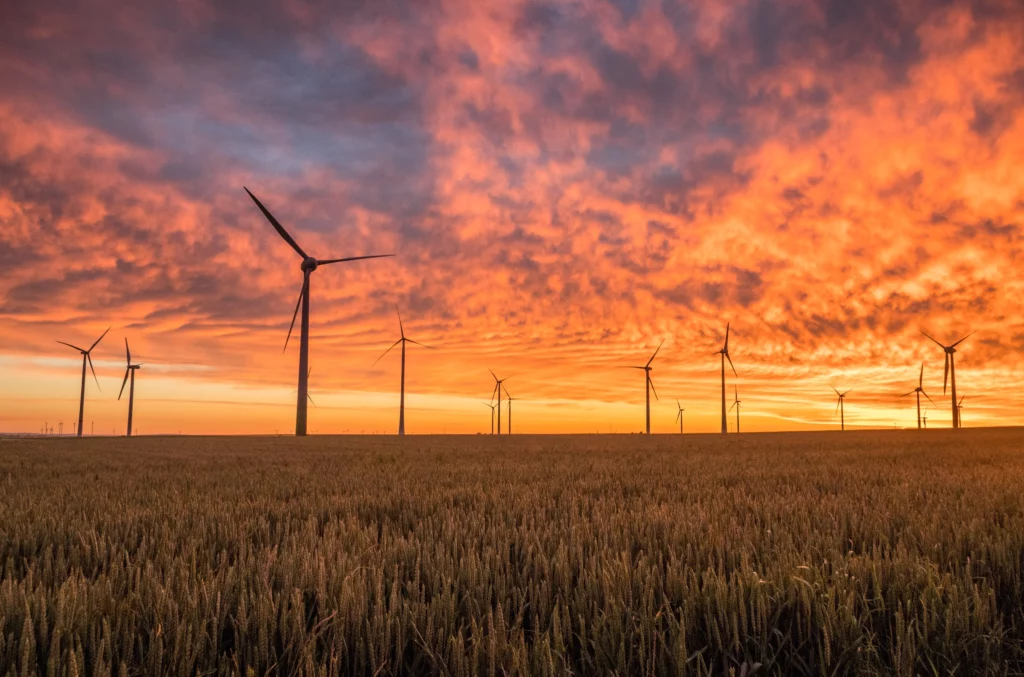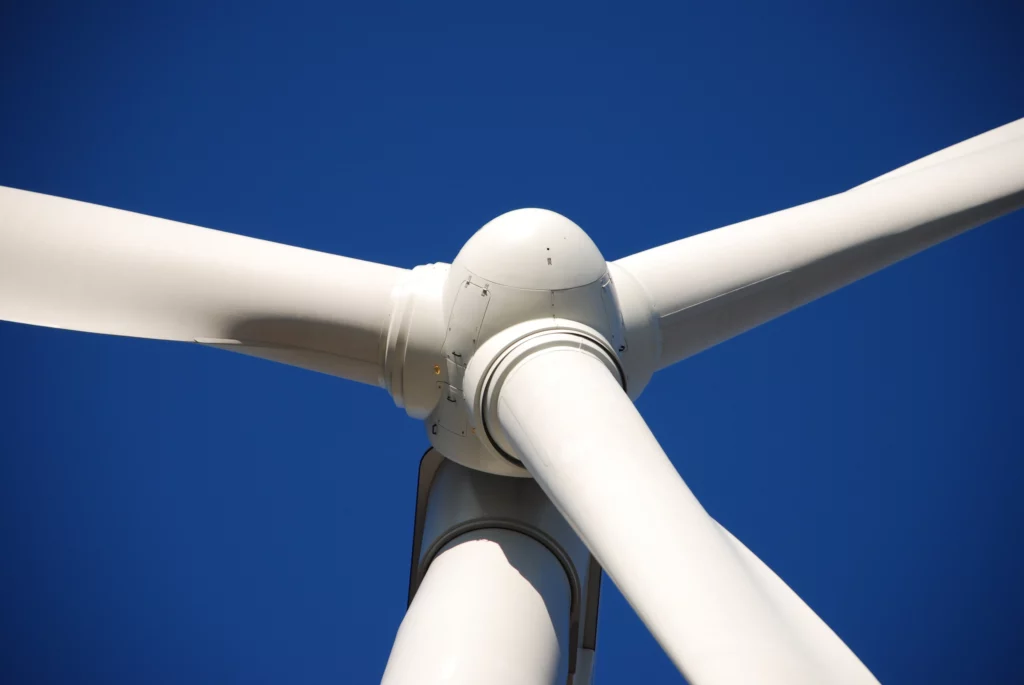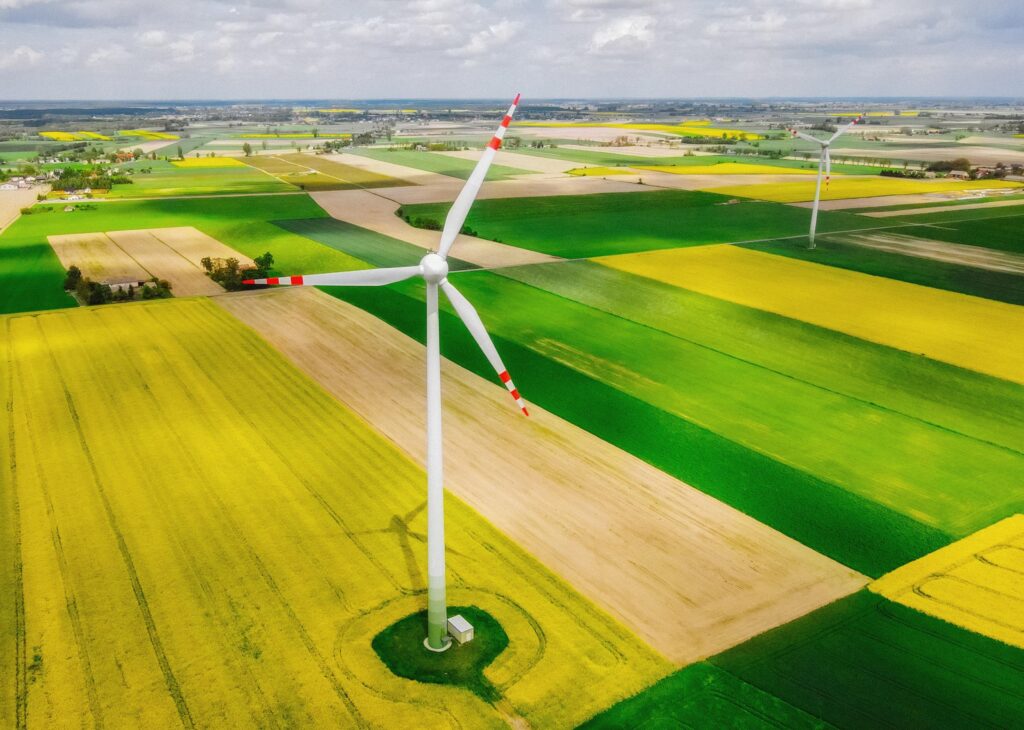What are the different types of wind turbines?
People tend to think about large collections of white towers dotted across farmland and floating offshore when someone mentions wind turbines. In truth, they provide the majority of the power that the UK enjoys as a renewable energy source. It’s not the only place where you can see them nowadays. A single, roof mounted or free standing wind turbine can be used on its own to supply power for many domestic properties or businesses, particularly if they have the right conditions available.
All wind turbines depend on a central axis that, when it turns, feeds into a generator and produces electricity. There are two ways this is normally done, with a vertical axis turbine or a horizontal one.
TYPES OF WIND TURBINE – Horizontal Axis Wind Turbines
Think of those massive blades spinning offshore and you’ll have a good idea what a horizontal wind turbine looks like. It normally faces in one direction with the blades presented like the archetypal windmill.
The main rotor shaft and generator is held in the box at the top of the array and everything is placed at the apex of a high column. It’s suitable to be used in places where the wind factor is high because it is robust and built to withstand strong forces. The disadvantages of the horizontal axis wind turbine are that it requires heavy construction and they are often considered more obtrusive.

TYPES OF WIND TURBINE
Vertical Axis Wind Turbines
TYPES OF WIND TURBINE – Wind turbines that have a vertical axis are starting to become more popular as a way for generating localised electricity particularly for new constructions. Because the axis is vertical, with the blades arranged around it, the array doesn’t need to be positioned directly into the wind as with horizontal axis turbines. The benefit of vertical axis turbines is that they can be placed much closer to the ground and are ideal for roof top arrays. They are also lighter and more easily introduced into a domestic, town or inner city environment.
TYPES OF WIND TURBINE – How Wind Turbines Generate Electricity
When the blades of a wind turbine turn, they rotate the axis which feeds into a generator. This creates a DC current which can then be passed through an inverter that changes it to AC, suitable for powering your home. If you are using it just as your own power source then you can charge up batteries or if you are producing an excess amount of power then you can sell it to the grid and make a profit on the electricity you produce through the Feed in Tariff.

Which Wind Turbines are Suitable for Me?
TYPES OF WIND TURBINE – Whereas a renewable technology like solar panels simply needs a good roof to make it a viable proposition, opting for a wind turbine to power you house or business will need a little more thought. You need an optimum wind speed of around 5 metres per second and you need an unobstructed space – in other words little in the way of trees, buildings or walls to prevent that wind getting to you or interrupting the flow. Because of this, most urban and suburban properties would find it difficult to get the benefits from a wind turbine.
If you think your house or business should have a wind turbine then the Energy Savings Trust suggests that you fit an anemometer, or wind gauge, for a couple of months to check on the viable wind speeds.
Home wind turbines can either be used to power a single building or can be connected to the grid and benefit from the Feed in Tariff. For sites that would suit a wind turbine there are two types of instalment that can be used, roof mounted and free-standing.
TYPES OF WIND TURBINE – Roof Mounted Wind Turbines
As you might expect these are placed on the roof and are used to feed electricity directly to a property. In this case the property provides the height to get the required wind force. The advantage of a roof mounted turbine is that it presents less difficulty with installation and is cheaper (a 1 kW system may cost around £1500). The disadvantage is that it may not provide the power that you need for all your own electricity nor the higher levels that mean you can make a profit from the Feed in Tariff by selling your excess to a power station.

Free-Standing or Pole Mounted Wind Turbines
When it comes to wind turbines, height means everything. The ideal place for a free-standing turbine is on top of a hill with a smooth top that is free from turbulence and obstructions such as buildings. The benefit of free-standing turbines is that they produce a greater power output and are therefore more likely to realise a profit with options such as the Feed in Tariff.
The disadvantage is that they are not suitable for urban areas where you are likely to attract planning permission objections. Free-standing systems are also more expensive than their house mounted counterparts, costing around £7000 for a 1.5 kW array.
The Future of Wind Turbines
Much work is being done on the design and efficiency of wind turbines, particularly over the last few years. In the future you may see airborne ones flying above your town or new, more exotic and aesthetically pleasing constructions on the roof of your neighbour’s house. Find out more about the future of wind turbines on our blog.








